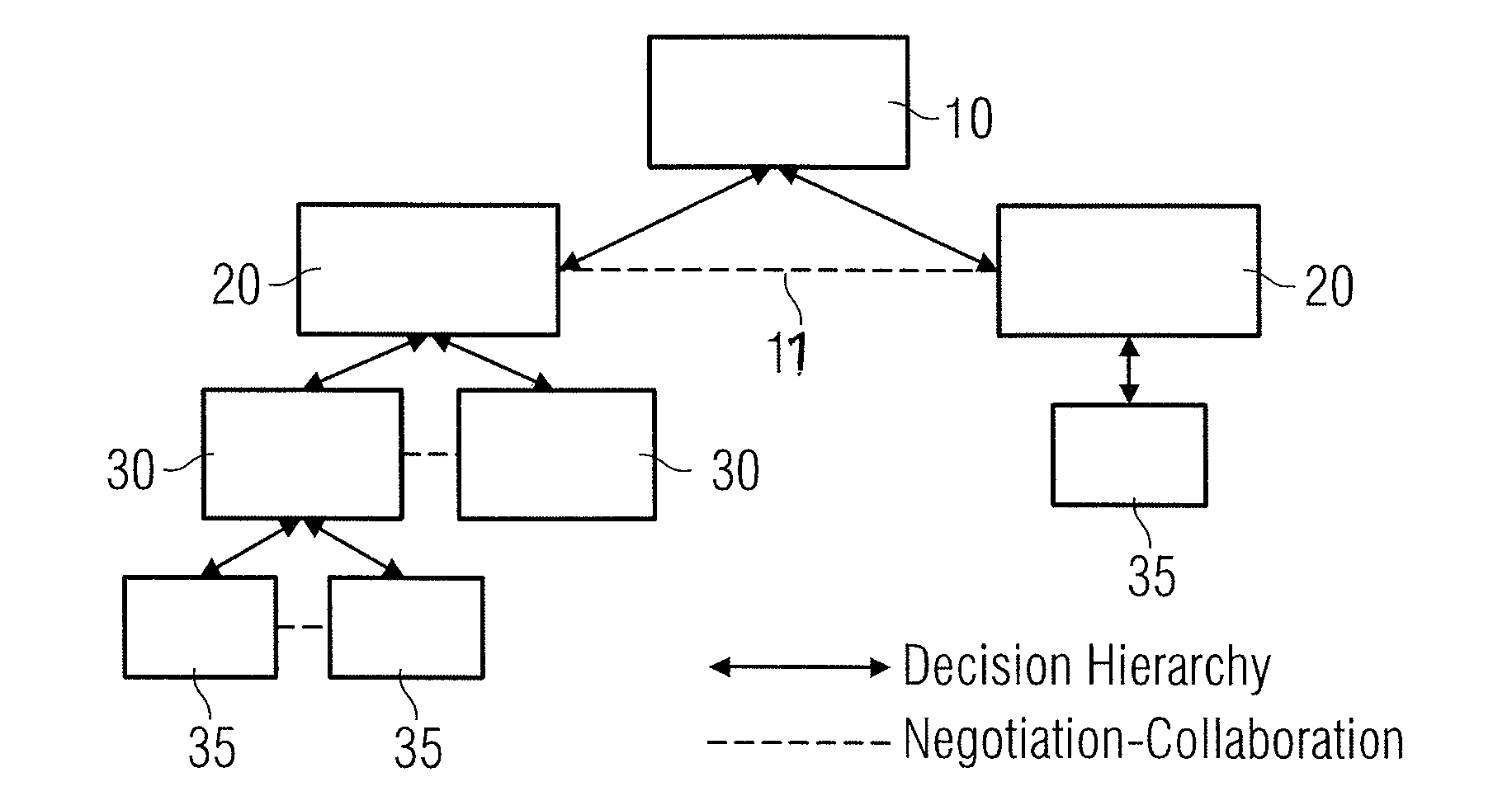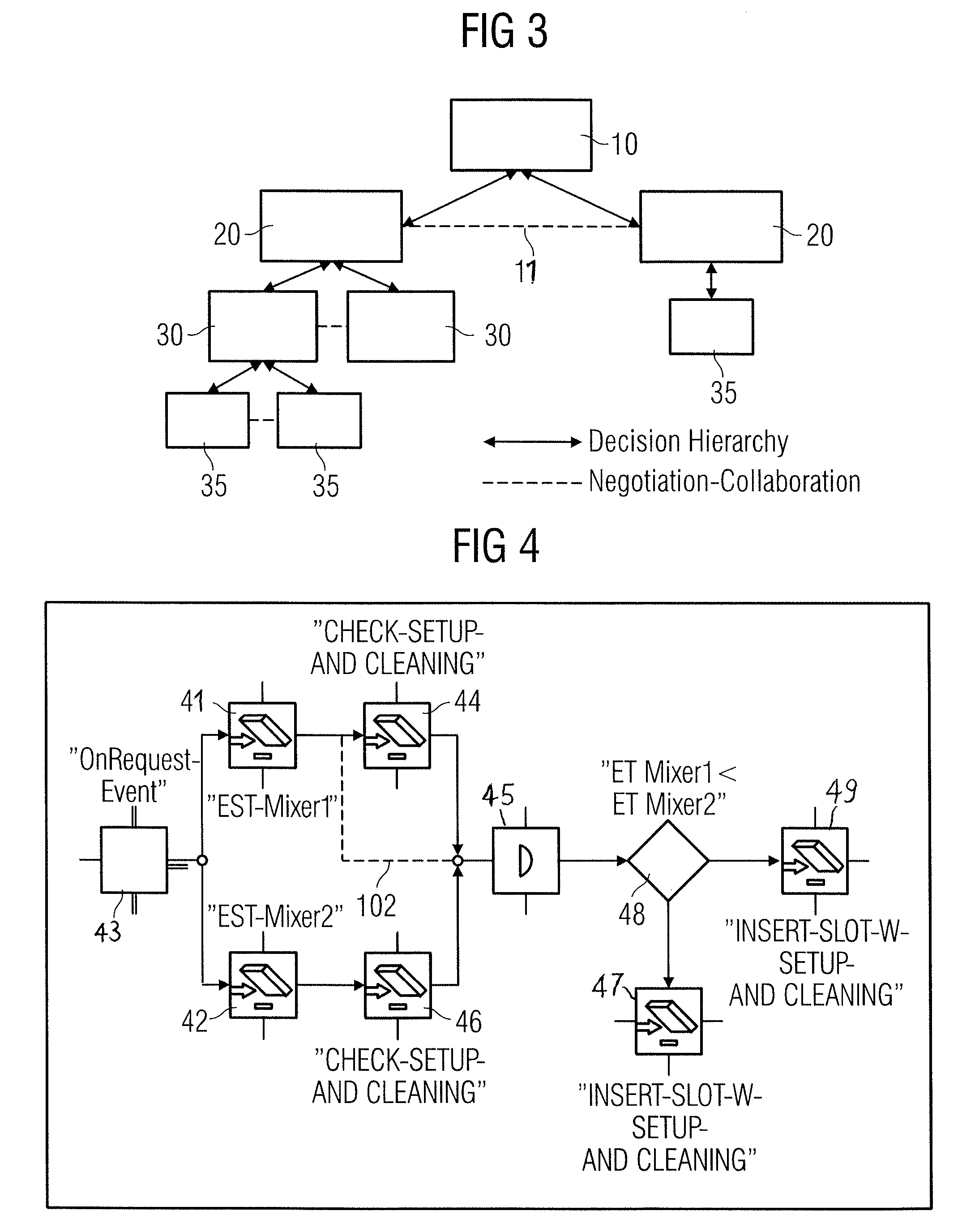Scheduling system and work order scheduling protocol for such a system
a scheduling system and work order technology, applied in the direction of multi-programming arrangements, electric programme control, instruments, etc., can solve the problems of insatiable quality of solutions that these scheduling architectures can obtain, and the generality of prior art schedulers that do not permit easy definition of new criteria by end users and/or taking
- Summary
- Abstract
- Description
- Claims
- Application Information
AI Technical Summary
Benefits of technology
Problems solved by technology
Method used
Image
Examples
case 1
[0110] The work order cannot be processed by the resource or its “child” resources (plant-branches). This is due to unfeasibility in matching the necessary operations and resource capabilities. This case can arise in various scenarios: an error has occurred in setting the scheduling rules for establishing the resource to be contacted; unexpected plant configuration changes have modified the plant-branch production capabilities, etc.
case 2
[0111] All the operations requested by the work order can be processed by one or more plant-branches that are children of the contacted resource and the scheduling criterion aims at containing all the operations of the same work order in one branch only, if possible. For instance, by applying this criterion, if a work order requires two operations, O1 and O2, and there are two identical cells (cell1 and cell2) containing units able to perform O1 and O2, then the work order is entirely processed in either cell1 or cell2; taking apart O1 and O2 of the same work order is not allowed.
case 3
[0112] All the operations requested by the work order can be processed by one or more plant-branches that are children of the contacted resource and the scheduling criterion allows spreading the operations of a work order among different branches, even if it is not strictly necessary. In the example given above, by applying this criterion, a work order can be executed by processing O1 on a unit of cell1 and O2 on a unit of cell2.
[0113]Regardless of the plant configuration, the possibility exists of applying different criteria in activating the work order operations. The behaviour depicted above is customizable by way of the Production Modeler (PM) rules in order to implement different scheduling criteria.
PUM
 Login to View More
Login to View More Abstract
Description
Claims
Application Information
 Login to View More
Login to View More - R&D
- Intellectual Property
- Life Sciences
- Materials
- Tech Scout
- Unparalleled Data Quality
- Higher Quality Content
- 60% Fewer Hallucinations
Browse by: Latest US Patents, China's latest patents, Technical Efficacy Thesaurus, Application Domain, Technology Topic, Popular Technical Reports.
© 2025 PatSnap. All rights reserved.Legal|Privacy policy|Modern Slavery Act Transparency Statement|Sitemap|About US| Contact US: help@patsnap.com



